
Richard Chauncey or Chauncy (1690--1760) was a London merchant who was four times the Deputy-Chairman of the East India Company and three times the Chairman.

Richard Chauncey or Chauncy (1690--1760) was a London merchant who was four times the Deputy-Chairman of the East India Company and three times the Chairman.
Chauncey was born into a well-to-do Northamptonshire family which had owned the Edgcote estate in South Northamptonshire since 1543. His father, Richard Chauncy, Sr. (d. 1734), was a Mercer and Freeman of London and the son of Tobias and Bridget Chauncy. Richard, Jr. became a London cloth merchant with an interest in East India merchant ships. [1]
He was also a partner in the business of Chauncey and Vigne, gunpowder merchants. [1] Already owning a gunpowder mill at Oare, Kent, he leased the Kingsmill at Faversham in 1754. [2]
Chauncey was a director of the East India Company from 1737 to 1754. He was made Deputy-Chairman in 1747, 1749, 1752 and 1754 and Chairman in 1748, 1750 and 1753. [1] [3] He died in 1760. [4]
In 1742 Chauncey inherited the Edgcote estate and commissioned architect William Jones (died 1757) to build a new mansion. Edgcote House was built between 1747 and 1752 and is now a Grade I listed building. [5] [6]
Chauncey was the maternal uncle of Chauncy Townsend, MP, the son of his sister Elizabeth by her husband Jonathan Townsend. [7] His widow Elizabeth's death was reported in 1762. [8]
His eldest son William married the eldest daughter of Josiah Wordsworth, in 1757. [9] William Henry inherited Edgcote; then on his death without an heir it passed to his sister, Anna Maria.
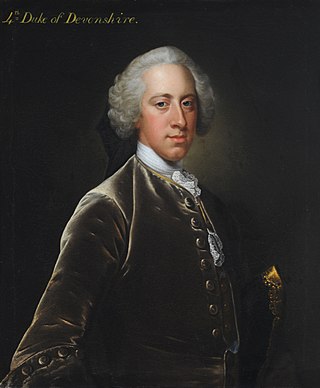
William Cavendish, 4th Duke of Devonshire,, styled Lord Cavendish before 1729, and Marquess of Hartington between 1729 and 1755, was a British Whig statesman and nobleman who was briefly nominal 5th Prime Minister of Great Britain. He was the first son of William Cavendish, 3rd Duke of Devonshire and his wife, Catherine Hoskins. He is also a great-great-great-great-great-grandfather of King Charles III through the king's maternal great-grandmother.

Charles Wyndham, 2nd Earl of Egremont, PC, of Orchard Wyndham in Somerset, Petworth House in Sussex, and of Egremont House in Mayfair, London, was a British statesman who served as Secretary of State for the Southern Department from 1761–63.

John Perceval, 2nd Earl of Egmont, PC, FRS was a British politician, political pamphleteer, and genealogist who served as First Lord of the Admiralty.
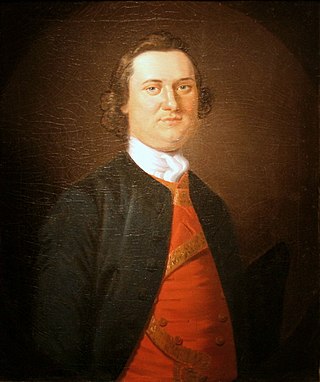
Lewis Morris was an American Founding Father, landowner, and developer from Morrisania, New York, presently part of Bronx County. He signed the U.S. Declaration of Independence as a delegate to the Continental Congress from New York.
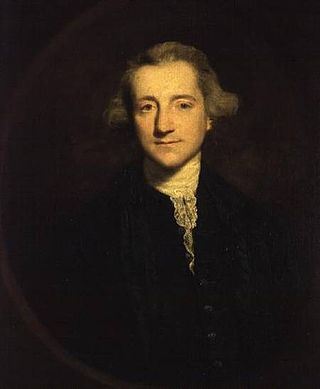
Henry Vansittart was an English colonial administrator, who was the Governor of Bengal from 1759 to 1764.

John Carr (1723–1807) was a prolific English architect, best known for Buxton Crescent in Derbyshire and Harewood House in West Yorkshire. Much of his work was in the Palladian style. In his day he was considered to be the leading architect in the north of England.

Arthur Devis was an English artist, half-brother of the painter Anthony Devis (1729–1816), and father of painters Thomas Anthony Devis (1757–1810) and Arthur William Devis (1762–1822). His place in the pages of art history is generally as a painter of the type of portrait now called a conversation piece.
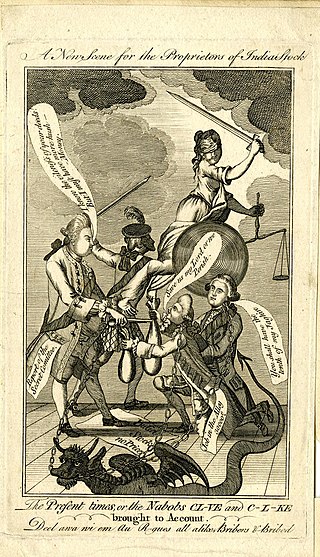
Sir George Colebrooke, 2nd Baronet, of Gatton in Surrey, was an English merchant banker, Member of Parliament for Arundel from 1754-1774 and chairman of the East India Company from 1767-1772. He was conspicuous by his wealth and ostentation, and the ambitious and speculative nature of his financial activities. Colebrooke was known as a stockjobber and a Nabob with close ties to Robert Clive and Alexander Fordyce. Colebrooke bankrupted himself through unwise speculations in the crisis of 1772.

HMS Tiger or Tygre was a 60-gun fourth rate ship of the line of the Royal Navy, built at Rotherhithe to the draught specified by the 1745 Establishment and launched on 23 November 1747.

Edward Finch-Hatton of Kirby Hall, near Rockingham, Northamptonshire, was a British diplomat and politician who sat in the House of Commons for 41 years from 1727 to 1768.

Sir William Baker was an English merchant and politician, a Member of the Parliament of Great Britain and Governor of the Hudson's Bay Company.
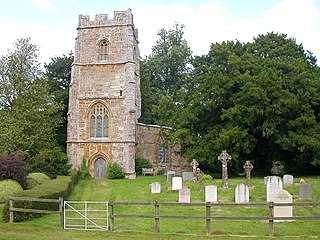
Edgcote is a village and former civil parish, now in the parish of Chipping Warden and Edgcote, on the River Cherwell in south-west Northamptonshire, England. The parish was bounded by the river to the north and by one of its tributaries to the east. The village is about 5.5 miles (9 km) north-east of Banbury in neighbouring Oxfordshire, and the south-western boundary of the parish formed part of the county boundary.
HMS Siren was a sixth-rate post ship of the British Royal Navy, in commission between 1745 and 1763, seeing action during the War of the Austrian Succession and the Seven Years' War.

James Townsend was an English Whig politician and Lord Mayor of London in 1772–73. He is believed to be England's first black member of parliament and the first black Lord Mayor of London.
Miles Barne was an English land-owner and a Member of Parliament for Dunwich between 1747 and 1754, and again between 1764 and 1777. Born into a family long associated with London merchant circles, Barne accumulated sufficient wealth to purchase an estate in Suffolk and became prominent amongst local freeman. Dunwich in Suffolk, his constituency, was a pocket borough, controlled by the Downing land-owning family; Barne, the local Vanneck family and the freemen of the borough slowly ousted the Downings' influence and Barne established himself as one of the town's new members, which gave his family the seat until it was abolished in the 1832 Reforms.
William Hiorne was an architect and builder based in Warwick.

The Leeward Islands Station originally known as the Commander-in-Chief at Barbadoes and the Leeward Islands was a formation or command of the Kingdom of Great Britain and then the United Kingdom's Royal Navy stationed at English Harbour, Antigua, Leeward Islands. It existed from 1743 to 1821.
Toby Chauncy, of Edgcote, Northamptonshire, was a British lawyer and politician who sat in the House of Commons from 1730 to 1733.